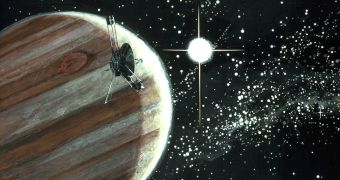On the 2nd of March 1972, NASA launched the first of the spacecrafts in the Pioneer space exploration program, Pioneer 10. All went incredibly well, with only one exception. After traveling about 20 astronomical units, NASA engineers observed what seemed to be an anomalous Doppler effect suggesting that the spacecraft had deviated way of its course for no apparent reason. The incident became well known in popular science as the Pioneer anomaly and was also experienced by the second of the spacecrafts of the Pioneer program, Pioneer 11.
The mystery regarding what actually happened remains unsolved even to this day, not to mention that at least five of all the spacecrafts launched into space exploration missions were also subjected to unexpected anomalies which altered their trajectories. After a ten year investigation, scientists studying anomalies similar to those experienced by the Pioneer spacecrafts revealed that, in their motion towards the outer regions of the solar system, they suffer the action of a constant acceleration force towards the Sun, which cannot be explained.
People trying to find an explanation to the mysterious phenomenon suggested a range of theories starting from a leaking fuel tank, to observational errors, radiation pressure and even a modification in the law of gravity, however all are mostly associated to speculative physics.
Astronomer John Anderson of NASA's Jet Propulsion Laboratory, one of the scientists who came in contact with the phenomenon during the Pioneer program, reveals that all the five spacecrafts executing fly-bys around the Earth where either too fast or too slow during the initial approach. NASA started investigating the motion of six probes traveling through the solar system as a result of the Pioneer anomaly, amongst which Galileo I and II, NEAR, Rosetta, Cassini, and the Messenger spacecraft, which has just arrived to planet Mercury.
Out of these six, only the Messenger spacecraft did not present a noticeable anomaly in its motion. Anderson writes: "There is something very strange going on with spacecraft motions, and we have no valid explanation for the anomaly". During the fly-by that took place in the early days of this year, the Messenger spacecraft passed over the surface of the Earth in the direction of the 32 degree parallel, while the initial approach clearly showed that it was following a direction corresponding to the 31 degree latitude. However, the small difference doesn't seem to present any relevance or link to the Pioneer incident.
Unfortunately, the same cannot be said while referring to the other five spacecrafts, since during the fly-by procedures they all suffered incoming or outgoing asymmetrical trajectories in relation to the Earth's equator. The example of the NEAR mission, is probably the most relevant of all. The spacecraft approached Earth at the 20 degree south latitude and, after the fly-by, fell again into space in a direction corresponding to the 72 south latitude, meaning that it basically had to be flying with a speed 13 millimeters per second faster than previously calculated.
This difference in spacecraft speed is only a millionth of the total velocity and was measured through radar techniques capable of measuring the speed of a spacecraft with a resolution of 0.1 millimeters per second. Well, the anomaly is true then, but how do we explain it? Anderson says that it's most likely the effect of the rotation of the Earth, since it seems to occur with probes with masses between 300 and 1,000 kilograms.
Secondly, the phenomenon appears while spacecrafts traveling through the solar system follow an orbit that is not bound to the central body, the Sun, in other words they are not actually orbiting the central star but the Earth. This is another curious aspect of the problem, though unbound to the central body orbits do not occur commonly in our solar system, theory says there is nothing unusual which could alter the trajectories of the spacecrafts. This doesn't mean that our theoretical models are accurate, though history has proved it many times in the past.
Additionally, NASA established a close collaboration with the ESA in order to measure any anomalies in the second fly-by of the probe, which will take place on the 13th of November.

 14 DAY TRIAL //
14 DAY TRIAL //